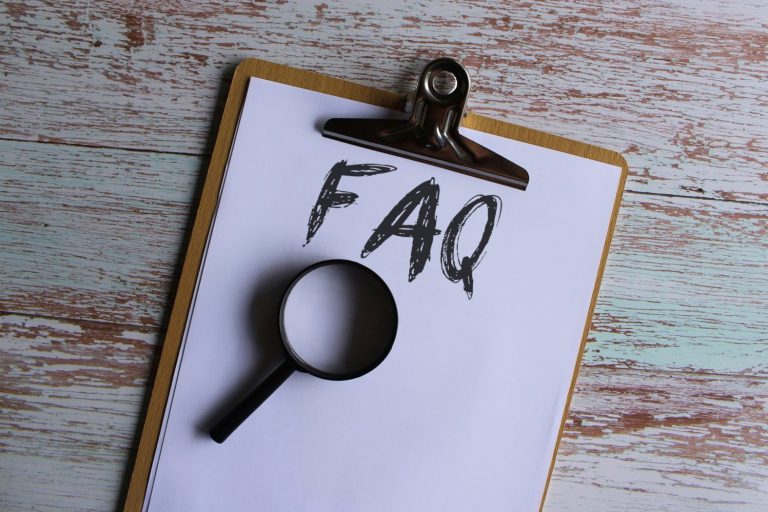Struggling to understand the purpose of a 301 redirect and the impact that implementing these can have on your website and Search Engine Optimisation (SEO) efforts?
Luckily, the SEO experts here at Aqueous Digital have effectively supported clients from various industries with a wide range of technical SEO requirements, including 301 redirects.
To help you determine how 301 redirects can support your business and website goals, we’ve created this comprehensive guide that explains when you should (and shouldn’t) use a 301 redirect.
We also explore how you can identify any existing 301 redirects on your website, how long they last, and whether this redirection has any impact (be it negative or positive) on your website’s SEO performance.
Regardless of whether you’re concerned about using too many 301 redirects or are searching for a way to transfer the SEO value of your existing website to your new and improved domain, the award-winning team at Aqueous Digital take an in-depth look at 301 redirect SEO best practices.
What is a 301 redirect?
One of many HyperText Transfer Protocol (HTTP) response status codes, 301 is one of the most well-known and widely-used codes.
This code signals to online users and search engines that a page or website has moved permanently from one URL to a new destination.
A 301 redirect therefore automatically sends users from the old URL to the new one.
What is the purpose of a 301 redirect?
If a 301 redirect simply directs online users to a new page, then you may be wondering why the original page isn’t simply deleted and a new page created.
This is because the real purpose of a 301 redirect (alongside sending online users from one URL to a new one) is to pass the value of the original page to the new URL destination and keep visitors engaged in your site.
A 301 redirect is therefore an essential tool for every SEO specialist and website developer as it helps retain any hard work you’ve put into gaining vital keyword rankings, building domain authority, and growing a loyal customer base.
Put simply, a 301 redirect passes this ranking power and link equity from the original URL to the new one!
This means that when your customers try to visit the original URL, the server will send back the permanent redirect 301 status code and swiftly move them to the new location. In many cases, they won’t even notice this transition from the old URL to the new as it happens so quickly and automatically.
However, they may notice that the URL has changed from the original.
When should I set up 301 redirects?
Website owners and web developers can choose to set up a 301 redirect for a wide range of reasons. From migrating websites to the deletion of unwanted pages, we take a closer look at some of these below.
Please bear in mind, however, that this is by no means an exhaustive list of reasons to set up a 301 redirect. Additional motivations can include consolidating different pieces of content, changing a URL, recreating content, and preventing duplicate content, among many other reasons.
Moving to a new website
Every SEO specialist knows the importance of 301 redirects when it comes to moving a domain. All the ranking signals your original website benefitted from will simply be transferred to the new location which could provide a better structure, layout, and customer experience. To retain the traffic that your old website is used to receiving, remember to set up the 301 redirect prior to migrating your website content.
Removing irrelevant pages
The most common reason for using a 301 redirect is when you want to permanently remove a page from a website, typically because the page contains outdated information about your business.
Instead of simply deleting the page and losing the SEO value inherent in that page and its content, it’s best practice to redirect users and search engines to alternative or even improved content using a 301 redirect. The 301 redirect should always be in place before you decide to delete the page to help prevent the loss of vital page rankings.
Retaining value of discontinued products
In some cases, eCommerce stores may have high-ranking product pages for products that have been discontinued. In this instance, it can make sense to set up a 301 redirect from the older model to the newer version, as this transfers that all-important value from the original URL to the new destination.
However, it’s important to bear in mind that a 301 redirect shouldn’t be implemented if the product in question is simply out of stock and will be back soon. Instead, you may want to consider setting up a 302 redirect as this is only temporary and can be reversed once the unavailable product is back in stock.
Switching from HTTP to HTTPS
Many domains choose to make the switch from HTTP (HyperText Transfer Protocol) to HTTPS (Hypertext Transfer Protocol Secure) using a 301 redirect for security purposes. This is because HTTPS uses the SSL (Secure Sockets Layer) or TLS (Transport Layer Security) protocol to encrypt communications.
TLS is the upgraded version of SSL, so this may be preferable if you want to prevent attacks that capitalise on the vulnerabilities of SSL. Regardless of whether you opt for TLS or SSL, ultimately, switching to HTTPS can help to prevent attackers from stealing data and provides customers with the confidence to explore your site, knowing that you are the business you are claiming to be.
A redirect 301 can therefore be set up to help fend off impersonations and protect both your business and customers by sending any online users that are visiting your original HTTP site to your new, more secure, HTTPS domain.
Do 301 redirects need SSL?
An SSL is a digital certificate designed to authenticate a website’s identity and create an encrypted connection, highlighting the site as a more reliable and secure domain. As a result, if the original domain doesn’t have an SSL certificate, the browser will view the 301 redirect connection as unsafe.
You will therefore need an SSL certificate for a domain with a 301 redirect to another URL. If you don’t have an SSL certificate for the original domain, online users will be presented with a security warning and they won’t be directed to the new destination.
How do I know if my website has 301 redirects?
Unsure how much SEO work has been completed on your website with regards to 301 redirects? You can check whether a 301 redirect has been set up in an instant by using an SEO redirect checker tool.
Often, all you need to do is input the URL that you want to analyse and the tool will highlight the redirection chain, the final URL destination, and the relevant HTTP status codes. You can also explore 301 URL redirects on your site by using browser extensions, browser developer tools, or website crawlers.
How do you send a 301 redirect?
Unfortunately, there’s no set process to setting up a 301 redirect as the process will vary depending on both the server and CMS (content management system) that your website uses. Implementing 301 redirects on some CMS platforms is far easier than others.
For example, setting up a 301 redirect on a WordPress website is relatively straightforward as you can use a selection of plugins to make the process even simpler. Whether you choose to utilise a free redirects plugin or a more premium option, both should allow you to easily add a 301 redirect in a matter of minutes to your WordPress website.
Regardless of whether you use Magento 1, Magento 2, BigCommerce, or Shopify, you will be able to set up 301 redirects on these platforms. Bespoke websites will also have their own process of setting up a 301 redirect, so you may want to consult your developer on the best way to approach this.
How long does a 301 redirect last?
Once you’ve set up a 301 redirect, the move is permanent and it will last until you actively change it. However, once you create a 301 redirect it’s important to keep it in place for at least a year as this will ensure search engines have enough to crawl the site and register the page move.
Can I delete a 301 redirect?
It’s true that 301 redirects are designed to be permanent. However, this doesn’t mean that they can’t be reversed – the process is just more complicated than it would be if you used a 302 redirect.
Are 301 redirects good for SEO?
While 301 redirects are undoubtedly useful for helping online users, they also play an essential role in helping search engines to understand the structure of your website. Using the right status code or redirect ensures search engines have an up-to-date index of your website.
To search engines like Google or Bing, a 301 redirect simply shows them where they can find the content that they used to be able to find at the old URL. Crucially, your visibility from the old page (such as high rankings for vital keywords and phrases) can be transferred to the new one, helping you to maintain your SEO progress.
As a result, properly implementing 301 redirects is considered beneficial for your SEO.
Does Google penalise 301 redirects?
No, Google’s official guidance on 301 redirects states that these redirects make no difference to your SEO efforts. This is because Google understands that there are various legitimate reasons for websites choosing to restructure or move pages using 301 redirects.
These reasons include making the switch from HTTP to HTTPS, redesigning your website, and removing irrelevant pages.
How many 301 redirects are too many?
In terms of Google (and other search engine) penalties, there’s actually no limit on the number of 301 redirects you can use on a website. However, an excessive amount of 301 redirects can be damaging in terms of reducing the server load speed.
It’s important to bear in mind, however, that every website has a crawl budget, meaning there’s only a certain number of pages that search engine bots can discover and index within a particular timeframe. As a result, if you have too many pages (and a chain of excessive 301 redirects), these pages could be left unindexed.
When should you not use a 301 redirect?
Due to the permanent nature of a 301 redirect, you should never use one of these redirects if you plan on bringing back the original URL. For temporary redirection, it’s best practice to use a 302 redirect as you can return to the original URL at any time without negatively impacting your SEO efforts.
Contact Aqueous Digital for expert redirects
There’s a reason there are different types of redirects, and each can have a significant impact on your SEO efforts as well as your customers. Fortunately, we’ve recruited a professional team of experienced SEO specialists that understand which redirects should be used and when to help protect your SEO progress.
At Aqueous Digital, we provide our clients with a wide range of technical SEO support, including URL redirection for their website. Ideal for businesses that want to develop a new website, we offer in-depth guidance on 301 redirect SEO best practices to ensure you retain the value of your original website and content.
Alongside technical SEO specialists, our award-winning team is also composed of highly-knowledgeable web developers and experienced copywriters to help you engage online users, increase enquiries, and drive revenue.
Regardless of whether you’re searching for paid and organic SEO services, reputation management for high-net-worth individuals, or expert content strategies, we can help. To find out more about when we use 301 redirects or to schedule your free website health check paired with a no-obligation consultation, reach out today!
To get in touch, you can either give us a call on 0800 285 1424, send us your enquiry in an email to , or alternatively, you can also get in touch with our Sheffield team by emailing us at hello@aqueous-digital.co.uk. We hope to hear from you soon!
However you decide to register your interest in our professional SEO services, we look forward to hearing from you!
Further reading on SEO
Why pillar pages are the foundations of a successful content strategy
How to conduct a thorough digital marketing audit of your website
Why digital marketing is important to business owners
Digital marketing trends to get ahead of the curve
Short-form vs. long-form content: Which is better for your website?
Digital marketing channels: Which one should you choose?
Content Optimisation: How to improve existing content on your website
How AI is becoming more prominent in digital marketing
How to create a results-driven digital marketing campaign
SEO for YouTube: How to optimise YouTube videos for search
How to boost your website’s domain authority
What is Evergreen Content and why does it matter for SEO?
Why we build backlinks to your website
How to develop a content strategy for SEO
Content is King. What is content marketing?
Creating great content: How to write for SEO
How digital marketing has changed over the years
How video content can elevate your website
Top 20 Facts about Manchester You Never Knew
Aqueous Digital’s Ultimate Guide to the cost of SEO in the UK
Aqueous Digital’s Guide to the Top 501 SEO and Digital Marketing Terms
How video content can elevate your business






